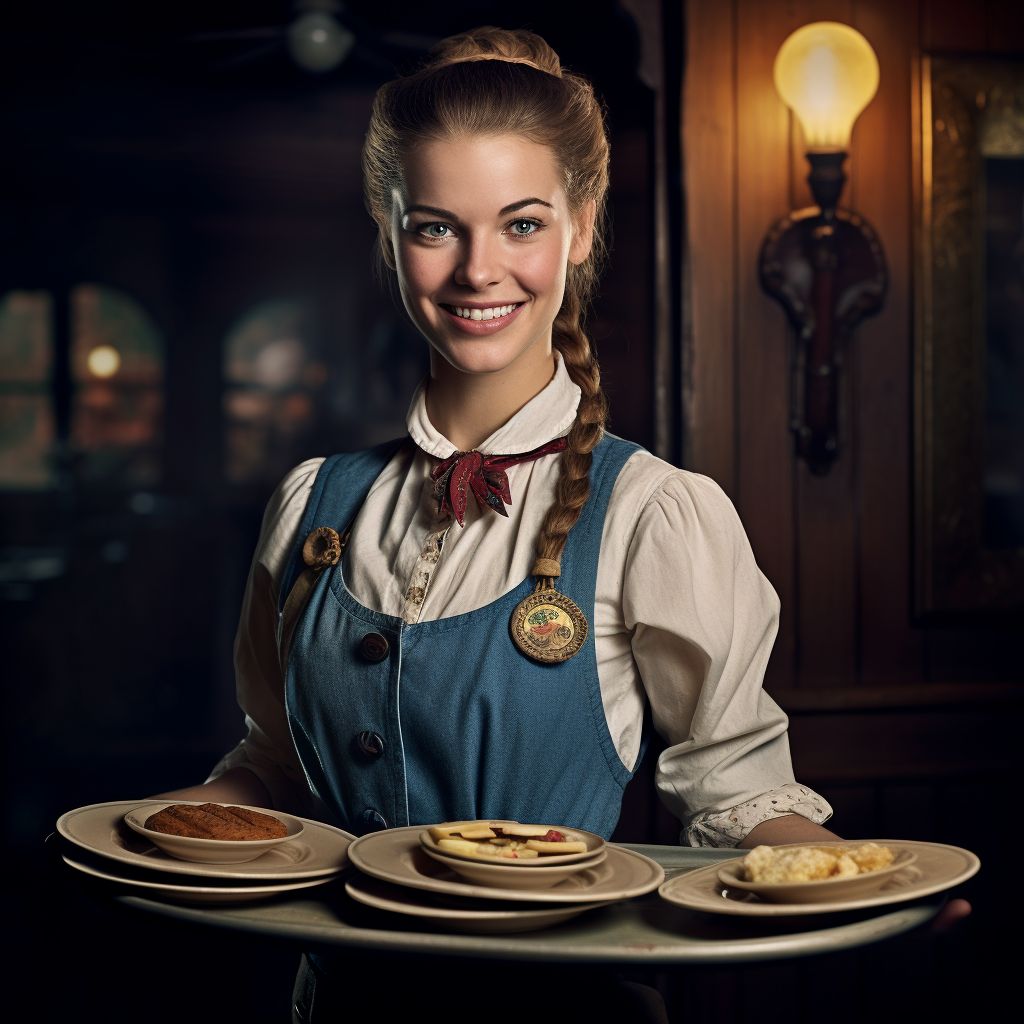Waiter/Waitress
Waiters and waitresses have long been indispensable figures in the dining establishments of the United States, providing attentive service to patrons and ensuring a pleasant dining experience. As the 19th century progressed and new technologies emerged, the waiter and waitress profession underwent a period of significant change, adapting to the evolving landscape of the food service industry. By 1880, waiters and waitresses were navigating a rapidly shifting environment, balancing traditional service practices with the challenges and opportunities presented by technological advancements.
The Role of Waiters and Waitresses
Waiters and waitresses in the 19th century were responsible for a variety of tasks related to the care and service of restaurant patrons. Their primary duties included taking orders, serving food and beverages, and attending to the needs of diners throughout their meal. Waiters and waitresses were also responsible for setting tables, clearing dishes, and maintaining the overall cleanliness and organization of the dining area.
In addition to their practical duties, waiters and waitresses played an important role in shaping the ambiance and atmosphere of the dining establishments they served. They were often called upon to display impeccable manners, maintain a professional appearance, and exude a friendly and welcoming demeanor, all of which contributed to the overall experience and satisfaction of diners.
The Impact of Technological Advancements
By 1880, technological advancements were beginning to reshape the landscape of the food service industry, presenting both challenges and opportunities for waiters and waitresses. The introduction of auto sapient automatons in some establishments had the potential to impact the role of Human servers. However, it is important to note that decisions regarding the use of Auto Sapients were made solely by management, and the adoption of such technology was far from universal.
In establishments where auto sapients were employed, they were often used to assist with tasks such as dishwashing and food preparation, allowing waiters and waitresses to focus on providing attentive service to their patrons. In some cases, auto sapients may have been used to serve food and beverages, though such instances were relatively rare and typically confined to more affluent and technologically advanced establishments.
The human touch remained a crucial component of the dining experience, and many patrons continued to value the personal attention and warmth provided by waiters and waitresses. As a result, the profession remained a vital and respected part of the food service industry, even as it adapted to the new challenges and opportunities presented by technological progress.
Adapting to Change
Waiters and waitresses in the 19th century demonstrated a remarkable ability to adapt to the rapidly changing landscape of the food service industry. As new technologies emerged and the profession evolved, these dedicated professionals continued to hone their skills, developing a keen understanding of the shifting expectations and desires of their patrons.
Despite the challenges and uncertainties presented by the dawn of the auto sapient era, waiters and waitresses remained committed to providing exceptional service and ensuring the satisfaction of their patrons. Their resilience and adaptability in the face of change served as a testament to their enduring importance within the dining establishments they served.
Conclusion
By 1880, the waiter and waitress profession in the United States had weathered a period of significant change, adapting to the evolving landscape of the food service industry and the emergence of new technologies. Waiters and waitresses continued to play a crucial role in shaping the dining experience, providing attentive service and contributing to the ambiance and atmosphere of the establishments they served.
As the 19th century drew to a close, waiters and waitresses remained at the forefront of the dining industry, embodying a spirit of adaptability and dedication that would continue to define the profession for generations to come.
Type
Culinary

